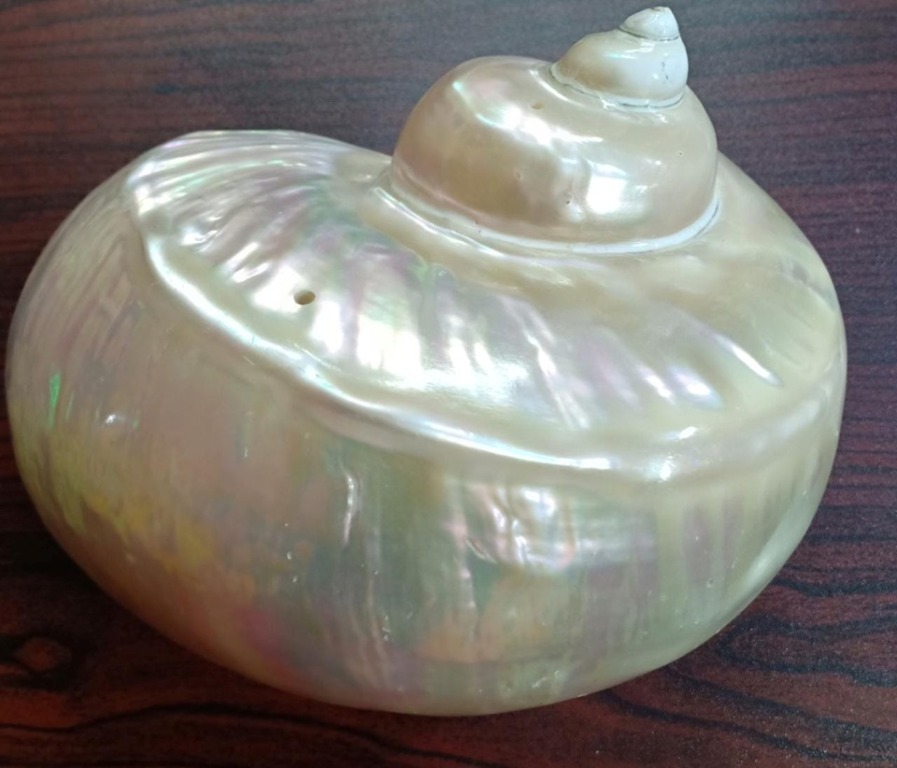The sacred ‘Sankha’, first mentioned in the Atharva Veda, was originally blown to declare the victory of good over evil. In the Mahabharata, Lord Krishna used to blow the conch shell to announce the beginning and closure of battle. Many might know that conch shell is also considered as brother of Goddess Lakshmi
Bhubaneswar: No major Hindu festival goes celebrated sans the warm, full, and far-carrying tone of conch shells.
Since the Ganesh Chaturthi days, the slew of festivities has begun and the vibrating sounds are emitting from all the pandals.
The sacred ‘Sankha’, first mentioned in the Atharva Veda, was originally blown to declare the victory of good over evil. In the Mahabharata, Lord Krishna used to blow the conch shell to announce the beginning and closure of battle. Many might know that conch shell is also considered as brother of Goddess Lakshmi.
And there comes our state. Balasore district has gained a special mention when it comes to conch shell-making. In a bid to trace the history, know about different types of conch shells and the economics of the manufacturing trade, Orissa POST interacted with Dr Manoj Lenka of Balasore and Bimala Rath who provided a comprehensive view.
It may be mentioned here that Dr Manoj Lenka is a conch shell researcher in the country, a subject which has found less takers but Lenka has not hesitated to take up this job with love and a care for conservation.
Lenka says: earthen conch shell is the eighth ratna (jewel) from the Samudra Manthan.
Mythology
It is widely believed that the first use of the ‘Sankha’ took place during the ‘Samudra Manthan’ or churning of the ocean.
According to Hindu mythology, Devas and Asuras once decided to churn the ocean to get special divine nectar. This divine nectar also known as ‘amrit’ was known to give immortality to whoever drank it. All the Gods were on one side of it and the Demons were on the other end. The ‘Samudra Manthan’ produced a number of things from the ocean. One of the first things to come out of it was lethal poison called ‘halahala’. Everyone was terrified, as the poison was potent enough to destroy entire creation, so they went to Lord Shiva for protection and he consumed the poison to safeguard the universe. Lord Shiva took the poison in his mouth, but did not swallow it. ‘Sankha’ also was one of the divine objects that was obtained from ‘Samudra Manthan’.
‘Sankha’ is closely associated with Lord Vishnu and Goddess Lakshmi. The God of wealth, Kuber, who is believed to be in possession of eight auspicious jewels, has ‘Sankha’ as one of them.
A conch shell is made from calcium carbonate material and a powder made from the shell material is used in ayurveda as a treatment for stomach ailments.
“From Satya Yuga onwards the blowing of conch shell has been considered to be pious,” adds Lenka.
Health benefits
“If someone drinks water from ‘Dakshinabarta Sankha’, or simply put a conch shell, then his/her lungs will be cured of any disease and it also helps as a stress buster.”
“A child who is learning to speak or a kid, who is having some auditory problems, blowing and listening to the reverberating sounds of the shell, respectively, may solve their problems,” Lenka points out.
Different types
Speaking about different types of conch shells available, Lenka mentions— Dakshinabarti Sankha, Moti Sankha, Sri Ganesha Sankha, Do Maukhi, Manipuspak, Kamadhenu, Lakshmi Sankha, Vishnu Sankha, Nagamani, Kashyapa, Sesha Nag, Kalagni, Bipadabhanjana, Panchajanya, Hira Sankha, Shera Sankha, Chakra, Rakhyasha and Ghosha Sankha.
In Mahabharata, Lord Krishna used to blow ‘Panchajanya Sankha’ while Arjun had ‘Debadutta Sankha’. Yudhisthir used to blow ‘Ananta Bijay’, Nakul ‘Sughosha’, Sahadeva ‘Mani Puspaka’ and Bhisma used to blow ‘Poundraka’ to fight-off enemies.
Lenka also spoke about earthen conch shell which is now being made in Balasore. He referred us to Bimala Rath, a housewife who has been the talk of the town for her earthen conch shells.
When Lenka came to know about Bimala, he visited Balasore along with Shilpi Keshu Das and gave Rs 20,000-order for earthen conch shells. The conch shells are touted to emit the perfect ‘Aum’ vibration.
A STORY ON SELF-RELIANCE
Orissa POST also interacted with Bimala Rath. Bimala, a resident of Durda Devi Kudia in Remuna block of Balasore—has been in this business since 2017.
She said, “I learnt making ‘Maati Sankha’ from Ramesh Muduli who brought the art from Baulgadia. After a 100 attempts, I could make the perfect earthen conch shell.”
Bimala has imparted earthen conch shell making training to more than 30 women; making them self-reliant. “My conch shells are exhibited at Nocci in Balasore where the small ones are sold for Rs 100 and big ones fetch between Rs 150 to 200.”
It may be mentioned here that Shilpi Keshu Das has also inspired Sushma Biswal, a Balasore lady who has inspired women in neighbouring Mayurbhanj district to be economically independent, to make earthen conch shells.
chaitali shome, op
